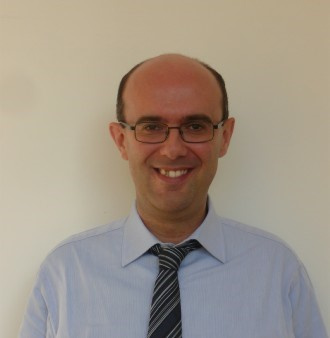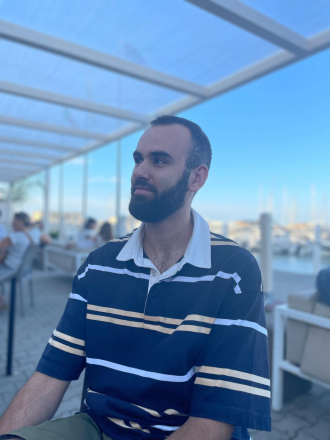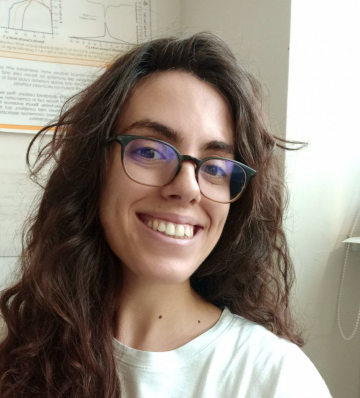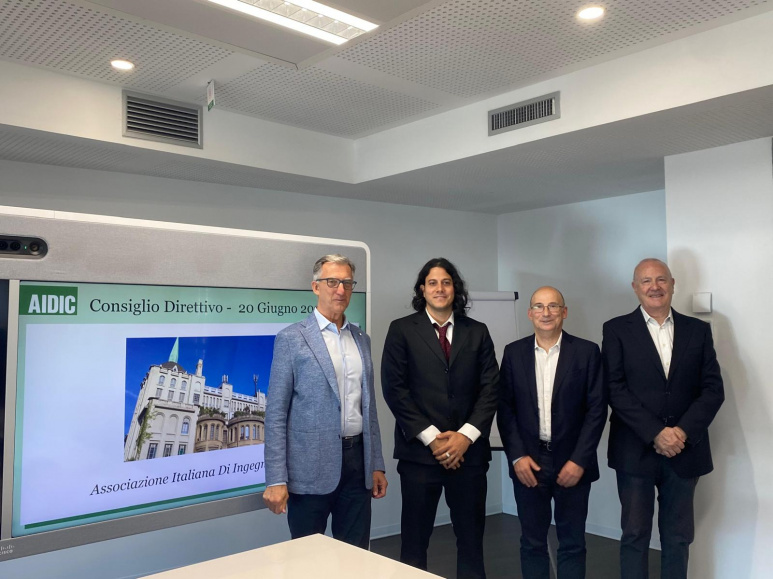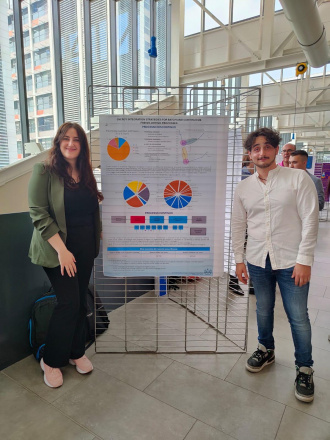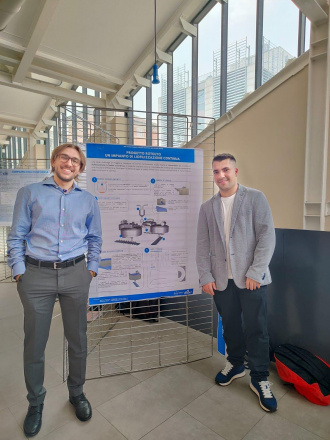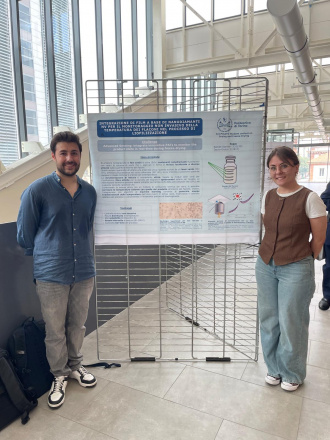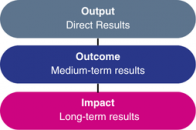Number 3 - 30.06.2025
The Board of Chemical and Materials Engineering: where education takes shape
by Davide FISSORE
|
|
Since October 2024, I have been serving, for the second term and until September 2027, as Coordinator of the Board of Chemical and Materials Engineering, which is responsible for the organization and management of the degree programmes in the areas of Chemical Engineering and Materials Engineering. These have been years of significant transformation, during which the number of students enrolled in the Board’s programmes has increased from 1,304 in the 2021-2022 academic year to 1,440 in 2024-2025. This growth reflects distinct trends within the various programmes, influenced both by national dynamics and by innovations introduced into our educational offering. In particular, the introduction of the English-taught curriculum in the Materials Engineering for Industry 4.0 programme, together with the activation of two Erasmus Mundus Joint Master pathways (Multiphase Systems for Sustainable Engineering and Manufacturing 4.0 by intElligent and susTAinable technologies), has made it possible to increase the number of international students from 18 to 212. A further increase is expected with the launch of the English-taught curriculum in the Chemical and Sustainable Process Engineering programme starting from the next academic year. The educational offering has also been enriched through the activation of Twin Track Master Programmes involving the programmes in Chemical and Sustainable Process Engineering, Energy and Nuclear Engineering, and Environmental and Land Engineering, building on the legacy of the experimental advanced training project "Technologies for Transitions." In 2024, the Chemical and Sustainable Process Engineering programme underwent an accreditation visit by ANVUR, receiving a positive evaluation that contributed to the overall favourable assessment of our University. Over these years, I have observed the considerable commitment of many colleagues who have actively contributed to the activities of the Board, as well as the constant support, both financial and otherwise, provided by DiSAT. We are now facing new challenges arising from the implementation of the University’s new educational model. I trust this will encourage a thoughtful reflection on the teaching activities to which we are dedicated each day, and that we will all be able to make the best possible use of the new tools available to us. I am confident that, thanks to our shared sense of responsibility and the dedication of all those involved, we will continue to strengthen the quality and international reputation of our educational programmes in the years ahead. Davide Fissore |
The “General” Makeover: How We’re Improving Department Life
by Carla ALGIERI
| In the last two years our University has' been involved in a strong process of reorganization of administrative and technical functions in order to facilitate the activities of the Districts of the Departments. This has' taken place through the identification of professionals dedicated to them in analogy with what has been done with the Directorates and structures on staff of the General Directorate of Administration. So, what’s new? A new structure called the "General Affairs Unit" has been created, bringing together several key functions. Here’s an overview:
|
WHAT A PHD!
Get to know PhD candidates from DiSAT doctoral courses as they reflect on their paths through research and academic life.
|
Leonardo di Bari PhD Candidate in Physics 39th cycle |
Hello, what is your name and in which research group have you been working? I am Leonardo Di Bari and I am working with Andrea Pagnani. Can you briefly describe your PhD research? Designing interpretable machine learning models to simulate protein evolution, using AI and statistical tools to uncover patterns in biological data. The research aims to enhance understanding of protein behavior and evolutionary dynamics, with potential applications in biotechnology, drug discovery, and biomolecular engineering. What have you enjoyed the most about your PhD work so far? The possibility of going deep into a subject and create collaborations with different people. What challenges or difficulties have you faced during your PhD? It has been painful to create a cotutelle with Sorbonne Universitè because of burocracy. Plus, I have slowly accepted the fact that most of the time the work consists in trying to solve problems and debug. Now I enjoy it, but at first I had to get used to it. What inspired you to start a PhD, and why at DiSAT? I really liked my master thesis project and the way of reasoning in research. Then I was interested in the research of Andrea Pagnani and I got into DiSAT. Looking back at your PhD journey, do you have any reflections, advice for future PhD students, or a memorable/fun anecdote from your time at DiSAT? I would suggest to make a short stage to understand if one really wnats to do reasearch. If you don't like what you research it's hard to do a PhD. For me the mastr thesis was very useful. Have you already decided on your next career step? If so, would you like to share it with us? Not yet. |
| Hello, what is your name and in which research group have you been working? My name is Paola Meli, I am a chemical engineer, and I work in the Chemical and Electrochemical Technologies research group at the University of Palermo. Can you briefly describe your PhD research? My PhD research focuses on the electrochemical reduction of CO₂ into higher value-added products. I investigate different systems and operating conditions to optimize the efficiency and selectivity of the process. What have you enjoyed the most about your PhD work so far? What I’ve enjoyed the most about my PhD so far is the opportunity to work on a topic that has both scientific relevance and environmental impact. I also appreciate the constant challenge of problem-solving and the chance to collaborate with researchers from different backgrounds. What challenges or difficulties have ou faced during your PhD? One of the main challenges I’ve faced during my PhD has been dealing with experimental uncertainty and unexpected results, which often require rethinking the setup or approach. Balancing multiple tasks such as research, writing, and sometimes teaching has also been demanding, but it has helped me grow both professionally and personally. What inspired you to start a PhD, and why at DiSAT? I’ve always been deeply fascinated by the potential of science and technology to address global challenges, particularly in environmental sustainability. I chose to pursue my PhD at DiSAT because of its strong focus on cutting-edge research in materials science and industrial technologies, which aligns perfectly with my research goals. Looking back at your PhD journey, do you have any reflections, advice for future PhD students, or a memorable/fun anecdote from your time at DiSAT? During my PhD journey, I realized it was a transformative experience filled with both challenges and achievements. I faced the challenges of experiments failing and ejection of papers from research journals, However, each failure step taught me to maintain a growth mindset. For Prospective doctoral students, my advice is to manage time efficiently by developing a schedule and prioritizing self-care, and surround yourself with mentors, advisors, and research fellows who can provide guidance and support. In last, celebrate your milestones, no matter how small. Always keep an eye on success, do not worry about hurdles that you will face during the entire journey. Have you already decided on your next career step? If so, would you like to share it with us? During my PhD journey, I enhanced my research skills particularly related to the most significant environmental issues, I would like to contribute to quality research with practical solutions for these environmental issues, would be good to join academia as a researcher to engage in finding the novel solutions and technologies for solving the environmental issues. |
Paola Meli PhD Candidate in Materials, Sustainable Processes and Systems for the Transition 39th cycle |
|
PhD Candidate in Materials Science and Technology 39th cycle |
Hello, what is your name and in which research group have you been working? Valeria, GAME Lab Can you briefly describe your PhD research? My Ph.D. research is focused on the cutting-edge study of some types of positive electrodes used in next-generation rechargeable sodium-ion batteries. The main focus is on one class of materials in particular, called layered oxides. It's an all-around study, starting from material synthesis and continuing through modeling to cell assembly What have you enjoyed the most about your PhD work so far? I like the fact that within the same project it's possible to do many different things and learn new stuffs, not only scientifically, but also from a management point of view. What challenges or difficulties have you faced during your PhD? I have felt the weight of making certain decisions and defending my scientific results, for example at conferences. But this is also the most satisfying part of this journey. What inspired you to start a PhD, and why at DiSAT? I wanted to start the doctoral program because I enjoyed the atmosphere of friendship, teamwork and appreciation that I experienced during my master's thesis. I chose DiSAT because it is a department of excellence and at the forefront of the research topic I am interested in. In addition, I have found an amazing group here. Looking back at your PhD journey, do you have any reflections, advice for future PhD students, or a memorable/fun anecdote from your time at DiSAT? I would probably just say to enjoy the journey and the people you share it with. And not to worry if sometimes things don't go the way you thought they would, because in the end even the hitch serve to get you to your destination. Have you already decided on your next career step? If so, would you like to share it with us? I don't know yet what I want to do in the future |
Awards for DiSAT
by Chiara RICCI
| AIDIC-ORIM 2024 Award The Italian Association of Chemical Engineering (AIDIC), with the aim of promoting and highlighting the most in-depth and innovative work of young graduates, launched in 2024 a competition for the awarding of prizes for Master's and PhD theses. To be eligible, theses had to address topics related to the fields of Industrial Engineering—especially Chemical Engineering—with an innovative and applied approach. The award ceremony took place on Friday, June 20 in Rome. In attendance were AIDIC President Giuseppe Ricci, AIDIC Servizi CEO Giorgio Veronesi—who also served on the judging panel—ORIM CEO Alfredo Mancini, AIDIC Secretary General Andrea Amoroso, and several members of the Association’s Executive Board. The second prize in the PhD Thesis category was awarded to David Javier Castro Rodriguez, research fellow at DiSAT, for his work titled "MODELLING INDUSTRIAL VULNERABILITIES WITHIN A MULTIHAZARD FRAMEWORK FOR THE RESILIENCE OF THE TERRITORIES”. David earned his PhD in Chemical Engineering in November 2024 under the supervision of Professors Micaela Demichela and Antonello Barresi, focusing on modeling interactions between industrial systems and multihazard environments to improve asset performance and regional resilience. From 2010 to 2020, he served as a permanent researcher at the Environmental Studies Center of Cienfuegos (CEAC) in Cuba, contributing to both national and international projects. Since 2020, he has been conducting research at DiSAT in close collaboration with the Interdepartmental Centre for Responsible Risk Resilience (R3C). He is currently a research fellow within the extended partnership RETURN (multi-Risk sciEnce for resilienT commUnities undeR a changiNg climate), a national initiative funded under Italy’s PNRR. |
|
|
|
|
| 3rd PoliTO Student Contest on Drying and Freeze-Drying The third edition of the PoliTO Student Contest on Drying and Freeze-Drying took place on June 13 in the “R” classrooms at Politecnico di Torino. The event, sponsored by DiSAT, is a side event of the Workshop Freeze-drying/Lyophilization of Pharmaceutical Products, which will be held in Novara in November. At the end of the live presentations by the six participating teams, the selection committee—composed of Professors Antonello Barresi, Davide Fissore, Roberto Pisano, and Dr. Fiora Artusio— awarded the top three teams based on relevance to the contest theme, methodological rigor, innovation, sustainability, and presentation quality. First place went to Team 2, composed of Moreno Puglie and Desirè Capoccia, with the project "Energy integration strategies for batch and continuous freeze-drying processes". |
|
|
|
|
| Second place was awarded to Team 3, made up of Stefano Cocchia and Edoardo Matta, for the project "Continuous vs batch processing". |
|
|
|
|
| Third place went to Team 6, composed of Daniele Salvati and Giulia Iozzia, with their project "Integration of NV nanodiamond-based films for non-invasive temperature monitoring of vials during the freeze-drying process". |
|
|
|
Storytelling research – a great challenge
by Chiara RICCI
| As part of POLITO’s actions to support Public Engagement and exchange with society, a training course on Communication and Storytelling of Research entitled “Communicating Research to Citizenship” was organized on June 19 and 20. The training, was divided into two modules with a training program coordinated by Massimiano Bucchi, Professor of Science, Technology and Society and Director of the International Master's Program in “Communication of Science and Innovation” at the University of Trento, in collaboration with VIU - Venice International University, a University engaged in communication issues within the European project COALESCE. It turned out to be a very interesting interactive course, and it could not have been otherwise, in order to give the researchers in attendance the opportunityto discuss concrete cases with the speakers. Therefore, it seemed fitting to share this information through DiS@Time. It emerged very clearly, how, in Communicating Research outside of technical areas there are principles and rules that need to be adhered to in order to make sure that there is involvement, that the message can get through clearly, that the listener does not get bored and does not lose sight of the accuracy of the scientific data. |
|
|
| Central to this is the realization that a Public Communication must be different from Scientific Communication and that the former can be thought of on three levels: Dissemination, Dialogue, Participation. It is then in relation to the type of audience to which the Communication is addressed that the context, language, and style must be defined. The European Horizon 2020 project QUEST - QUality and Effectiveness in Science and Technology communication (questproject.eu) promoted by Venice International University with important European partners, in taking stock of science communication and defining quality criteria has prepared a checklist to support those doing science communication. The goal is to provide citizens with effective and reliable communication on scientific topics that generally have a significant impact on their daily lives. And here then are some concrete suggestions: 1. Time to prepare Communication cannot be improvised! It is like a play: it must be rehearsed, edited, refined. Give it the time it deserves. 2. Know your audience Who are you facing? Students? Experts? Curious people? Knowing who's listening is half the job. 3. So what? Why should it be of interest? Find the heart of your research, what makes people say, “Ah, interesting!” 4. Less is more Three clear messages, not one more. If they are not clear to you, they will not be clear to anyone. 5. Message Framing Every message needs context. Positive or negative? It doesn't matter. But tell where it comes from. 6. Familiar Connections Use examples, news or references that the audience already knows. It's like speaking their language 7. Passion! If you don't get excited, no one gets excited. Passion is contagious. 8. Storytelling Stories capture, they stay, they excite. Tell your research as an adventure. 9. Short sentences, simple words Be clear, direct, precise. No roundabouts. 10. Dialogue Involve, ask, listen. But this, too, must be prepared. Dialogue is an art. 11. Testing with non-experts Got a 9-year-old on hand? Perfect! If he understands, everyone will understand. 12. Skeptics and doubters Don't defend hard. Acknowledge limitations, show humility, and be prepared to respond smartly. The strength of communication should always be measured according to certain principles:
And objectives should always be SMART i.e.: S - Simple M - Measurable A - Achievable R - Relevant T - Time-based A part of the course was spent on Visual Communication, the use of Charts, Images, Diagrams. Again fundamental to define: Audience, Medium, Purpose to get the best results. Here are some suggestions: Charts
Diagrams
Images
In conclusion here is Storytelling: in the story I include the research, the challenges, the hardships, the helpers. There is a protagonist who embarks on a journey and comes out transformed. Attention is ensured even more if the story is about people, simple and familiar events. Much more has been illustrated and if you have a desire to learn more or ask for information, the DiSAT Culture & Communication Committee is at your disposal. |

